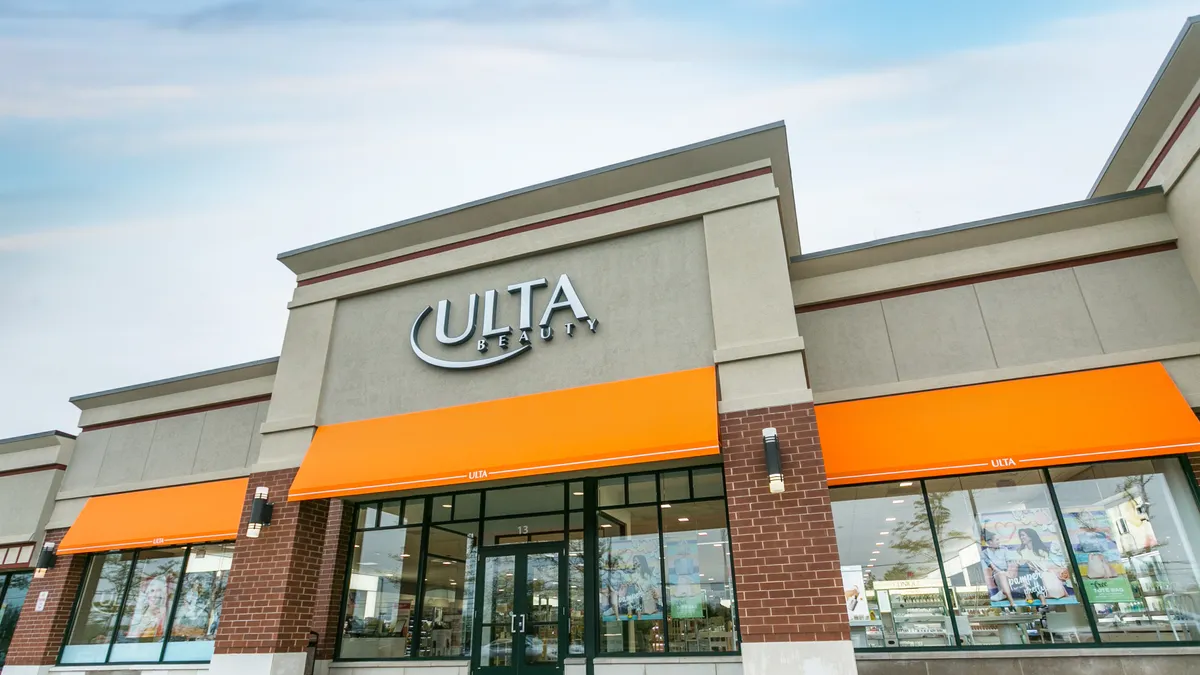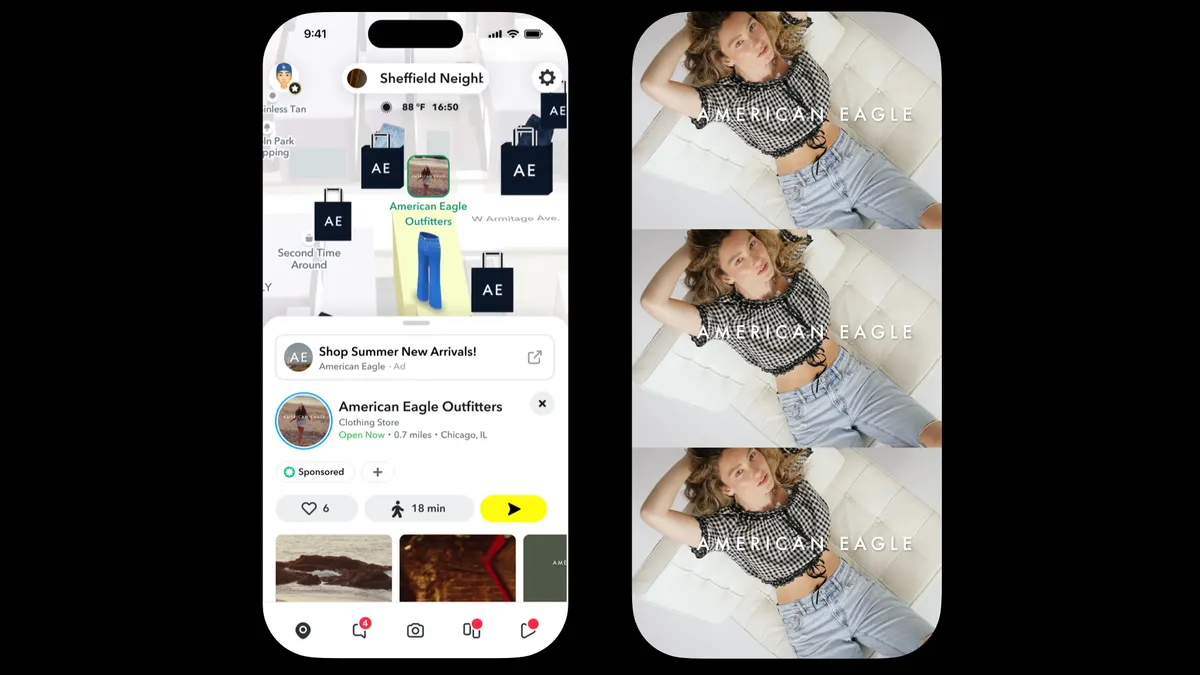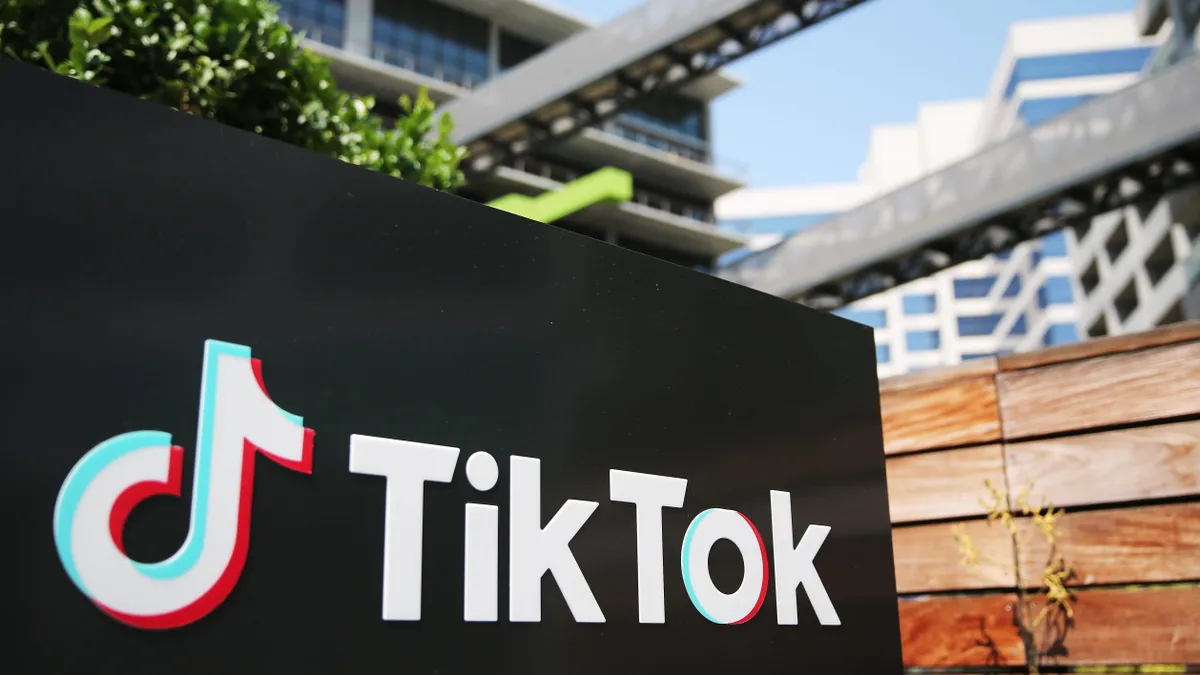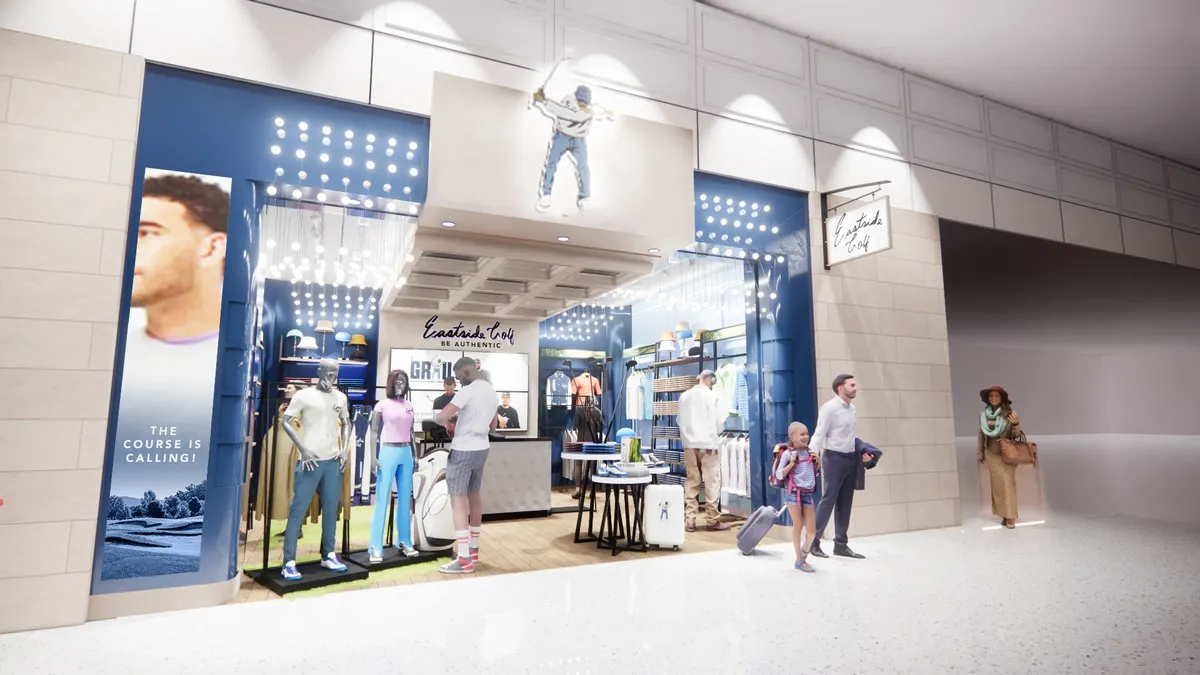To become known, street vendors in the 18th and 19th centuries would hawk their products and services in open-air markets.
Fast-forward a couple centuries, and brands now rely on the likes of Facebook, Google and Amazon to help push their products in front of the eyes of consumers.
But as digital ad costs have risen in recent years, retailers are exploring new ways — and resurfacing more traditional channels — to advertise their goods and diversify their marketing strategies.
Resurgence of print
Direct mail in the United States has a long history. The first direct-mail catalog sent out in the U.S. is said to be Tiffany's "Blue Book" in 1845. But several others jumped on board, like Montgomery Ward, Sears and J.C. Penney. In fact, according to SiteWorks CEO and founder Nick Egelanian, the biggest players in print advertising, at one point, were grocery stores and drugstores.
One of the main reasons retailers originally leaned into catalog shopping was because consumers weren't online to the same degree they are today. With print catalogs, consumers could flip through, select the items they wanted and either call or send a completed order form back in the mail to complete their purchase without having to visit a store, said Lauren Bitar, head of insights and partnerships at RetailNext.
"Then shopping online became one of the main channels, so a lot of advertising and marketing dollars were put into that versus a catalog," Bitar said.
And as data-rich platforms like Facebook and Google became popular channels for digital advertising, catalogs began to lose their broad appeal even further.
"Print's historical difficulty was that you have no attribution in that — compared to digital — you just can't track what actually drove sales," Alex Song, CEO of growth acceleration platform DojoMojo, told Retail Dive.
But despite the rise of e-commerce — further accelerated this past year as consumers limited trips to the store — some retailers and brands continue to strategically use print catalogs. Part of the appeal is simply that as major players started to move away from print, it became less occupied, and the channel started to be a more appetizing option for retailers to pursue in order to stand out.
Catalogs allow retailers to take the consumer through their brand in a way they may not otherwise be able to experience online, Bitar added. "Being able to show something in a space can provide a better feel for the consumer when they're missing that tactile experience."
And beyond catalogs, direct-mail marketing more generally has taken off recently, according to Polly Wong, president of Belardi Wong. Beginning last May, 80% to 90% of Belardi Wong's clients — which tend to serve a more affluent consumer — reported "really strong growth numbers" in any given month, as well as strong response rates in the mail for both customer acquisition and retention, Wong said.
"She's got to touch it to recycle it."

Polly Wong
President of Belardi Wong
Direct mail has become particularly attractive to direct-to-consumer brands as online competition heats up, and relying solely on Facebook and Google has come at a cost.
"There's been an insane resurgence in the mail," Wong said. "The reason we have so many clients is that we've launched over 200 DTC brands successfully into the mail in the last five years. They're looking to diversify their marketing mix. Nobody wants to be completely dependent on Google and Facebook, especially with all the constant changes happening and the rising digital costs."
Wong said that among the most popular categories advertising through the mail this past year were food, outdoors and home, fueled by pandemic trends.
But brands have also been forced to rethink how they approach direct-mail marketing. "Honestly, the people who moved away from print — the Victoria's Secrets of the world — they basically just created a downward spiral. I remember as a customer I got three different direct-mail pieces in one week from them," Wong said. "People that turned away from direct mail were over mailing to begin with."
The channel, while abandoned by some, became an economical marketing solution for many as digital advertising costs became more expensive.
"Just to give you some perspective, you can mail a full-sized catalog for 65 cents, including postage. The average cost-per-click for DTC brands and retailers is between $2 and $4. It's kind of insane," Wong said. "You can actually mail six to eight catalogs to a highly targeted audience for the cost of one click. So what's happened is that, by comparison, direct mail and catalog marketing is actually affordable."
And having a physical presence, even if that means sending a physical catalog or mailer to a consumer, can help establish a sense of legitimacy and credibility around your brand, something particularly useful to emerging brands, according to DojoMojo's Song.
Especially for those brands that sell more expensive items online, a physical catalog in the hands of consumers may be what sends them online to hit the purchase button.
"If you're trying to convince somebody to buy a $300 sweater, and you're an emerging DTC brand, you're a fashion brand and you're not a household name — digital acquisition is very hard for emerging brands that have high tickets, whether it's home or fashion, or jewelry," Wong said. "If the consumer doesn't know you, and you have a higher price point, putting something in front of them in the mail — there is a correlation between response rates and square inches. That real estate of the physical direct-mail piece is in fact driving higher response rate."
Print, by default, also has 100% viewability with the consumer, Wong added. "She's got to touch it to recycle it."
'What's old is new again'
Beyond catalogs and direct mail, brands have made other forms of advertising that weren't particularly sought after popular again. "We always joke around here, what's old is new again, like TV and print," Wong said, noting that the data and technology associated with these channels are more advanced today.
But the ways in which brands approach physical marketing will vary considerably, especially between larger, more traditional retailers and smaller DTC brands.
"The general print ad landscape is relatively expensive. Even though the costs have come down over the years, it still is a pretty lofty marketing channel for a young brand to pursue, especially when there's a lack of clear execution," Song said. "Bigger brands will find moments to utilize it in a meaningful way. I think the smaller brands will do things that we've seen, like subway takeovers."
Many digital brands, from Casper and Thinx to Spotify, disrupted traditional marketing and bought up ads in New York's subway in recent years as a way to garner attention around their companies and products.
But, Song cautioned, as channels begin to become increasingly popular, the same opportunities once offered initially may not be available. "If you think about the Casper subway takeover. That happened like four years ago and was very innovative at the moment because subway ads in New York were not seen as like a prime print ad to purchase," Song said. Casper was "able to get it for super cheap, and they made the economics work, and that also legitimized them a bit because it made them feel, to all of the subway commuters, like 'Wow, this must be a really big brand. They're taking over the entire subway.'"
Combining print with agile marketing can also help brands marry the allure of print with the benefits of digital marketing, Song said, noting that brands can post a print advertisement on the side of a vehicle, and if people are located near the vehicle and have GPS location enabled, the brand can then deliver them an ad based on their geolocation.
"The store as a marketing channel isn't something new, but it's really who's using the store as a marketing channel that has changed."

Lauren Bitar
Head of Insights and Partnerships at RetailNext
But when it comes to the OG marketing tool brands are using more these days, nothing compares to the old-fashioned physical store.
"The store as a marketing channel isn't something new, but it's really who's using the store as a marketing channel that has changed," Bitar said.
Years ago, digitally native brands started entering the market with the notion of "cutting out the middleman" and shipping goods directly to consumers. But as the online space became saturated with competition, the limitations of selling goods exclusively online became more apparent, especially given the high marketing costs associated with customer acquisition. In turn, several of those DTC brands have started pushing into brick and mortar — whether through pop-ups, permanent stores or partnerships with traditional retailers — helping provide an additional marketing channel for their businesses.
"It's also a way that you can fully immerse consumers in what you're envisioning in a way that you might not be able to do digitally," Bitar said.
The appeal of brick and mortar is extending beyond just retailers and brands now, though. Allure earlier this month opened an experiential retail store in New York City, featuring a curated selection of over 280 beauty products from more than 150 brands, which have all been previously featured in the beauty magazine. The store integrates technology into the in-store shopping experience through the use of augmented reality, QR codes and smart mirrors.
"As consumers begin to return to in-store shopping, innovation is critical for brands to cut through the noise," Markus Grindel, managing director of global brand licensing at Condé Nast, said in a statement regarding the store opening. "Allure Store is reimagining retail with an entirely new approach to beauty, combining its trusted editorial voice and unparalleled expertise to create a first of its kind, 360-degree immersive shopping experience."
Rethinking digital marketing strategies
When Apple introduced iOS 14 last year, it featured a number of updates, including — most notably for brands and marketers — changes to tracking within apps. Through the updates, apps now need to ask permission before tracking, which includes connecting information collected about a user on the app with separate information collected by other companies for targeted ads and ad metrics.
"Something we're seeing that's very difficult on the DTC side is that the iOS 14 updates are making it very difficult to find successful return on investment like we once saw, perhaps even just a year ago," Song said. "What that means now is everyone actually has to scramble and search out new marketing channels that are going to yield more profitable return because unfortunately, in this moment in time — in the last, I would call it, two and a half months — the good old Facebook, Instagram channel as a marketing arena is not as available or dependable as it once was."
Song added that Facebook at one point used to drive 50% of consumers' revenue, but that's no longer guaranteed. As a result, brands "must diversify at this point, which is the interesting thing you're seeing on the brand-building side," Song said.
Social media as a marketing channel hasn't been completely written off. The specific social channels being used, however, are changing.
"You're going to see the budgets from Facebook and Instagram, either head towards platforms like TikTok and Pinterest and YouTube, or alternatively, you're going to see them head towards other non-digital [channels] like sponsorships, partners, print ads, possibly activations, pop-ups," Song said.
In addition to print marketing channels and stores, brands can pursue other forms of media as a form of advertising. For example, Trader Joe's in 2018 launched its first podcast series, "Inside Trader Joe's," which ranked among the top shows to listen to on iTunes when it first went live.
"Trader Joe's speaks to a lifestyle. Everything about Trader Joe's speaks to a lifestyle — the products, the pricing, the nature of the checkout, the kind of people who check you out, the training of the people who check you out, the language they use, the euphemisms they use. It's all by design," Egelanian said. "The fact that they're speaking to their audience in a language that the audience expects from them, that's another opportunity to connect with them."
It's a medium other brands and retailers have adopted as well, like Coach and Barney's. Even Ikea, which halted the production of its print catalog after 70 years, announced it would make the "catalog" available via podcast and audiobook formats.
Experimenting to find the right approach
There seem to be more advertising channels for brands to explore than ever before, but how can they determine which ones are best for the message they're trying to convey?
The best way, Egelanian said, is to just ask the customer what they want to see. "The most advanced consumer research can bring them to the right answers whether it's something as simple as online polls," he said.
And doing so is easier than ever: While retailers had to stop consumers in store to ask about their preferences before, technology like geofencing now allows retailers to track habits digitally. "You not only know who your customers are, you know where they shop, what competition they shop, who they shop more. Are they a full-price shopper or a discount shopper? And then you can target advertising to them based on their preferences, so two different people can get two highly different ads," Egelanian said.
But choosing the right method for advertising isn't necessarily one-size-fits-all. What works for one brand may not work well for another, so experimentation is key, Bitar said.
For example, print doesn't make sense for every brand. Take Patagonia or REI, which have strong sustainability initiatives. A 200-page catalog likely doesn't align with the brand mission. But for a higher-end furniture brand like RH, where the purchase is likely an investment piece, a catalog may help the consumer feel more confident ordering outside of a showroom.
"I don't think there's a silver bullet. Part of it is actually testing and experimenting," Bitar said. "The first step is to have an honest look at: What is your brand, and what is the vision of your brand? What are you trying to say?"






















